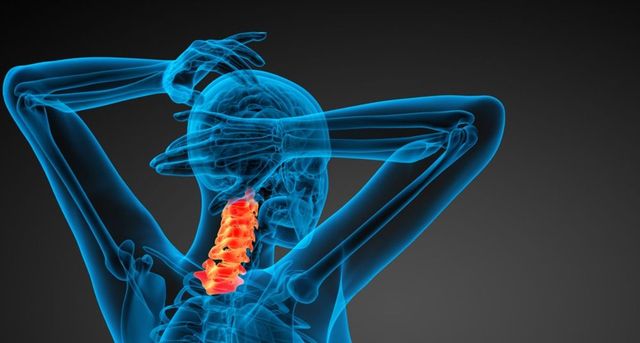How It Works: Spinal Decompression and Its Role in Recovery
Wiki Article
All Regarding Spinal Decompression: Effective Solutions for Spinal Health and Wellness
Spinal decompression therapy has arised as a feasible alternative for those looking for alleviation from numerous spinal issues. This non-invasive treatment targets the source of discomfort, such as herniated discs and persistent back discomfort. Understanding its principles and applications can lose light on exactly how it promotes total spinal health and wellness. What are the particular benefits and strategies associated with spinal decompression? Discovering these inquiries might disclose useful understandings for people considering this strategy.Understanding Spinal Decompression Treatment
What precisely is spinal decompression therapy, and just how does it operate? Spinal decompression therapy is a non-invasive treatment intended at easing stress on the spine's discs and nerves. It uses specialized equipment to carefully extend the spine, producing negative stress within the discs. This unfavorable pressure facilitates the repositioning of herniated or protruding discs and motivates the increase of vital nutrients and liquids into the affected areas.People typically push a mechanized table that sustains the spine while enabling regulated grip. The treatment can target different spinal problems, consisting of chronic back sciatica, disc, and pain deterioration. Procedure are typically painless and can last from 30 to 45 minutes. While numerous patients experience instant relief, a series of sessions may be suggested for finest outcomes. In general, spinal decompression treatment represents an alternative technique to spinal wellness, intending to restore function and promote overall well-being.
The Scientific Research Behind Spinal Decompression
Spinal decompression treatment is grounded in principles of biomechanics and physical reaction to pressure modifications within the spinal column. This non-invasive treatment aims to relieve spinal disc pressure, which can add to pain and pain. By using grip methods, spinal decompression creates a negative pressure environment within the intervertebral discs. This unfavorable pressure promotes the repositioning of herniated or protruding discs and promotes the influx of vital nutrients and fluids, helping in the recovery process.Research suggests that spinal decompression can lead to an increase in disc height, which may reduce nerve root compression. Chiropractor. The treatment also aims to boost spinal positioning, potentially enhancing total biomechanical feature. Recognizing these scientific concepts helps practitioners apply spinal decompression efficiently, guaranteeing that individuals receive targeted care tailored to their details spinal conditions. On the whole, the scientific research behind spinal decompression underscores its relevance in the field of spinal health and wellness
Benefits of Spinal Decompression
While lots of people seek relief from persistent pain in the back, the advantages of spinal decompression extend past simple pain management. This restorative strategy aids in enhancing spinal wellness by promoting proper positioning and minimizing stress on intervertebral discs. Enhanced flow is another notable benefit, as spinal decompression assists in much better blood flow to the spine, beneficial surrounding cells and speeding up recovery processes.Additionally, spinal decompression can result in boosted versatility and improved range of motion, making it possible for people to participate in everyday tasks with greater convenience. Several people record boosted general wellness and a decrease in stress levels, as reducing neck and back pain can substantially improve lifestyle.
Additionally, spinal decompression might work as a preventive step, assisting to avoid future spinal issues by keeping ideal spinal feature. On the whole, the multifaceted advantages of spinal decompression emphasize its relevance in promoting long-term spinal health and health.
Kinds of Spinal Decompression Methods
Numerous methods exist for spinal decompression, each developed to relieve pressure on the spine and boost general health. One common technique is mechanical spinal decompression, which makes use of a grip table to carefully extend the spine, producing adverse pressure in the discs. Another approach is hand-operated spinal decompression, carried out by a chiropractic physician, that applies regulated force to straighten the spine and soothe tension.Furthermore, there are non-invasive treatments such as inversion therapy, where people hang upside down to promote spinal prolongation. In addition, workouts that concentrate on reinforcing core muscles can add to spinal support and decompression.
Finally, some professionals use advanced techniques like spinal decompression devices, which are engineered to provide targeted alleviation. Each method intends to improve spinal positioning, lower pain, and enhance flexibility, satisfying the one-of-a-kind needs of people looking for remedy for spinal pain.
What to Anticipate Throughout a Spinal Decompression Session
During a spinal decompression session, patients can anticipate a series of prep work actions created to ensure their comfort and safety and security. The session itself commonly involves a mix of restorative methods focused on alleviating stress on the spine. Comprehending these aspects can aid individuals feel much more comfortable prior to and during the treatment.Treatment Preparation Tips
As clients get ready for a spinal decompression session, they can expect a meticulously organized procedure created to assure their comfort and safety. Originally, professionals will certainly carry out an extensive analysis, assessing medical background and present symptoms to customize the therapy. Individuals may be suggested to put on comfy apparel and get rid of any type of jewelry that can disrupt the procedure. It's additionally typical for clinicians to describe the technology and strategies utilized in spinal decompression, making certain individuals understand the process and its benefits. Additionally, clients may be instructed to hydrate effectively prior to the session. This prep work aims to create a favorable atmosphere for spinal health, permitting clients to feel secure and informed about their therapy journey.Session Experience Overview
A spine decompression session commonly unravels in a regulated and tranquil setting, where individuals are located comfortably on a specialized table developed for the treatment. The practitioner begins by clarifying the process, ensuring the client understands each step. Once settled, gentle grip is applied to the spine, creating space in between the vertebrae to minimize stress on the discs and nerves. Individuals might really feel a light stretching sensation, however discomfort needs to be minimal. Sessions usually last about 30 to 45 minutes, throughout which the practitioner keeps track of the patient's response. Later, clients might receive recommendations for follow-up treatment or workouts to boost outcomes. On the whole, the experience aims to advertise leisure and healing, fostering a feeling of wellness.Who Can Benefit From Spinal Decompression?
Who stands to obtain one of the most from spinal decompression therapy? Individuals experiencing persistent neck and back pain, herniated discs, or degenerative disc illness are key prospects for this treatment. Those experiencing sciatic nerve pain or numbness in the limbs may additionally benefit considerably, as spinal decompression can help alleviate pressure on the spinal nerves. Furthermore, professional athletes recovering from injuries or people with postural problems often locate relief via this therapy.Individuals seeking a non-invasive option to surgical procedure for their spinal wellness problems may consider spinal decompression as a viable option. It is crucial for possible candidates to speak with healthcare professionals to figure out the appropriateness of this therapy for their details problems. Overall, spinal decompression therapy can supply substantial advantages for a diverse series of people, improving their overall lifestyle and advertising far better spinal health and wellness.
Tips for Maintaining Spinal Health After Therapy
After undergoing spinal decompression therapy, preserving spinal wellness is important for lasting wellness. Carrying out routine exercise regimens, being conscious of stance, and establishing an ergonomic workspace can significantly contribute to a much healthier spine. These practices not just sustain recovery but likewise help prevent future problems.
Normal Workout Regimens
Maintaining spinal health and here wellness adhering to treatment is important for lasting recuperation and general health. Regular workout routines play a vital role in this procedure. Involving in low-impact activities such as swimming, walking, and cycling can aid strengthen the muscles supporting the spine, boost adaptability, and boost total flexibility. Integrating core-strengthening exercises is specifically useful, as they offer stability and support to the spine. Additionally, gentle stretching routines can relieve tension and advertise relaxation in the back muscle mass. It is essential to speak with a health care specialist prior to beginning any kind of new workout program to guarantee it straightens with individual recuperation objectives. Consistency in these tasks cultivates an aggressive method to spinal wellness, assisting in the prevention of future concerns.Stance Understanding Strategies
A solid awareness of pose can greatly influence spinal health and wellness throughout the recovery procedure. Individuals should purposely preserve an upright placement, ensuring that the head is straightened with the spine and shoulders are loosened up. Consistently signing in with one's position throughout the day can help enhance excellent behaviors. When resting, making use of a supportive chair that promotes lumbar assistance is vital. Furthermore, representing prolonged durations requires weight circulation between both feet and engaging the core muscular tissues. Exercising mild stretches and flexibility workouts can likewise enhance recognition of stance. Mindfulness methods, such as deep breathing, can help in identifying stress and advertising relaxation in the back. Applying these techniques fosters a proactive technique to spinal health and wellness post-treatment.Ergonomic Work Space Setup
While an ergonomic work space might seem like a high-end, it is important for those recuperating from spinal issues. A well-structured atmosphere can substantially aid in maintaining spinal wellness. Crucial element include a chair with back assistance, which urges appropriate posture, and a desk elevation that enables joints to rest at a 90-degree angle. Additionally, computer screens need to go to eye degree to lessen neck pressure. Routine breaks to stretch and stand are necessary, as prolonged sitting can aggravate pain. Footrests can additionally enhance blood circulation and decrease pressure on the lower back. By prioritizing these ergonomic principles, individuals can produce a supportive work space that fosters recovery and advertises lasting spinal health, eventually enhancing general productivity and comfort.Often Asked Questions
Just How Lengthy Does Spinal Decompression Therapy Commonly Require To Show Results?
Spinal decompression treatment commonly takes a number of weeks to show visible results. A lot of clients experience renovation within 4 to 6 weeks, depending on specific conditions and adherence to the suggested therapy plan detailed by health care professionals.Exist Any Kind Of Adverse Effects Connected With Spinal Decompression Therapy?
Spinal decompression therapy might create mild side results, such as temporary pain, muscular tissue spasms, or soreness after treatment. Nonetheless, these signs are normally brief and resolve promptly, permitting people to proceed their therapy successfully.Can Spinal Decompression Therapy Be Done in your home?

Is Spinal Decompression Safe for Expectant Ladies?
Spinal decompression is typically thought about hazardous for expectant ladies due to potential risks. It is vital for expectant moms to seek advice from healthcare specialists before undergoing any spinal therapies to guarantee the safety and security of both mommy and child.Exactly how Usually Should I Go Through Spinal Decompression Therapy for Best Results?
Usually, individuals need to undertake spinal decompression treatment a couple of times a week for finest results. The regularity might differ based on individual problems and ought to be determined by a medical care specialist.Spinal decompression treatment is based in principles of biomechanics and physiological action to stress modifications within the spinal column. Recognizing these scientific concepts aids specialists use spinal decompression properly, ensuring that individuals get targeted treatment tailored to their certain spinal conditions. Spinal decompression may offer as a preventive procedure, aiding to prevent future spinal concerns by maintaining optimal spinal function. People looking for a non-invasive alternative to surgical procedure for their spinal health issues may consider spinal decompression as a practical choice. After undergoing spinal decompression treatment, keeping spinal health and wellness is crucial for long-lasting well-being.
Report this wiki page